First, it was the XC Spark, next the trail Genius, then last year’s enduro Ransom, and now finally a prototype Scott Gambler DH bike gets its own Bold redesign, with the rear shock completely hidden inside the frame. The last of the Scott full-suspension mountain bikes to get the integrated redesign.
Apparently, Scott has an all-new full-carbon Gambler downhill bike in the works. And it looks pretty close to production-ready. Although we still noticed a few in-development tweaks being tested. We spotted it racing the wet and muddy DH World Cup in Bielsko-Biała World Cup under the Scott Downhill Factory team. They weren’t especially hiding the prototype Scott Gambler, and we’ve got a pretty good idea of what’s going on inside…
Prototype Scott Gambler carbon 6-bar World Cup DH bike
While we’d normally say we don’t know too much about the particulars of an unreleased prototype bike with much of its tech hidden inside, I happen to ride the latest Ransom. And this new Gambler frame looks an awful lot like my enduro bike. That’s not a giant surprise, as Scott basically described their new Ransom to me as a DH-ready bike that you can still pedal uphill. A sentiment backed up by my own custom super enduro build, you may have spotted in my Maxima brake & Eagle 90 drivetrain reviews.
So the new Gambler will share the same 6-bar suspension layout with just a few DH tweaks. That’s most likely to get 200mm of rear wheel travel, to mount 200mm travel double crown forks, and to add different geometry and suspension adjustability than I find on my enduro bike.
So what’s new?
Longer travel
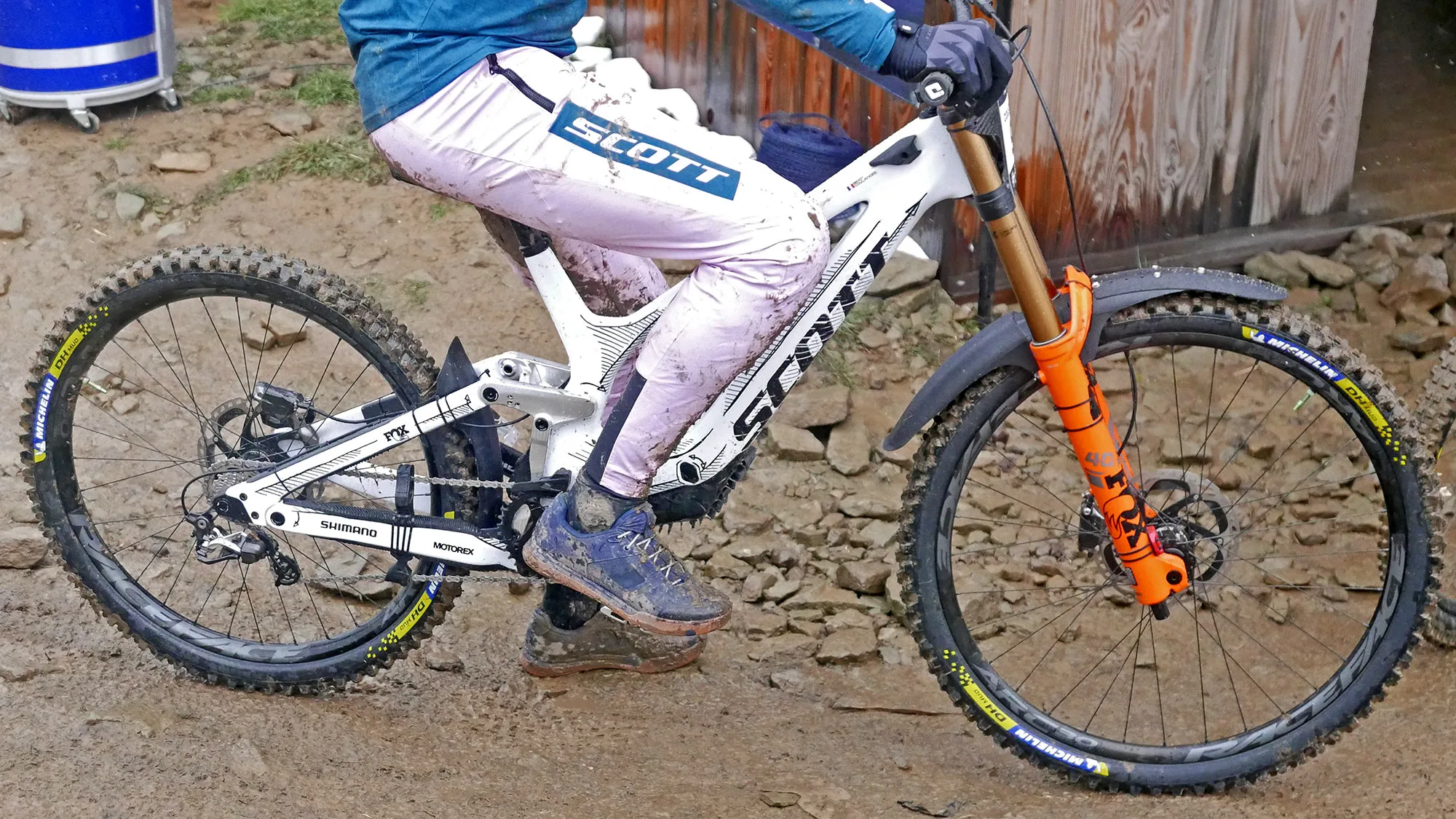

Beyond the simple logical assumption that this prototype 6-bar Scott Gambler DH bike is most likely getting about 200mm of travel front and rear, there are a few obvious differences when compared to the similar-looking Ransom.
First off, the prototype bike I saw Benoit Coulanges racing features a much longer raw aluminum rocker link. His rocker links also have three extra bolt holes in them, which allows Scott to join the left & right rocker arms with a connecting bridge for added stiffness. Compare that to the separate white and slightly shorter rocker links on the bike below, or the separate, even shorter rockers on the existing Ransoms.
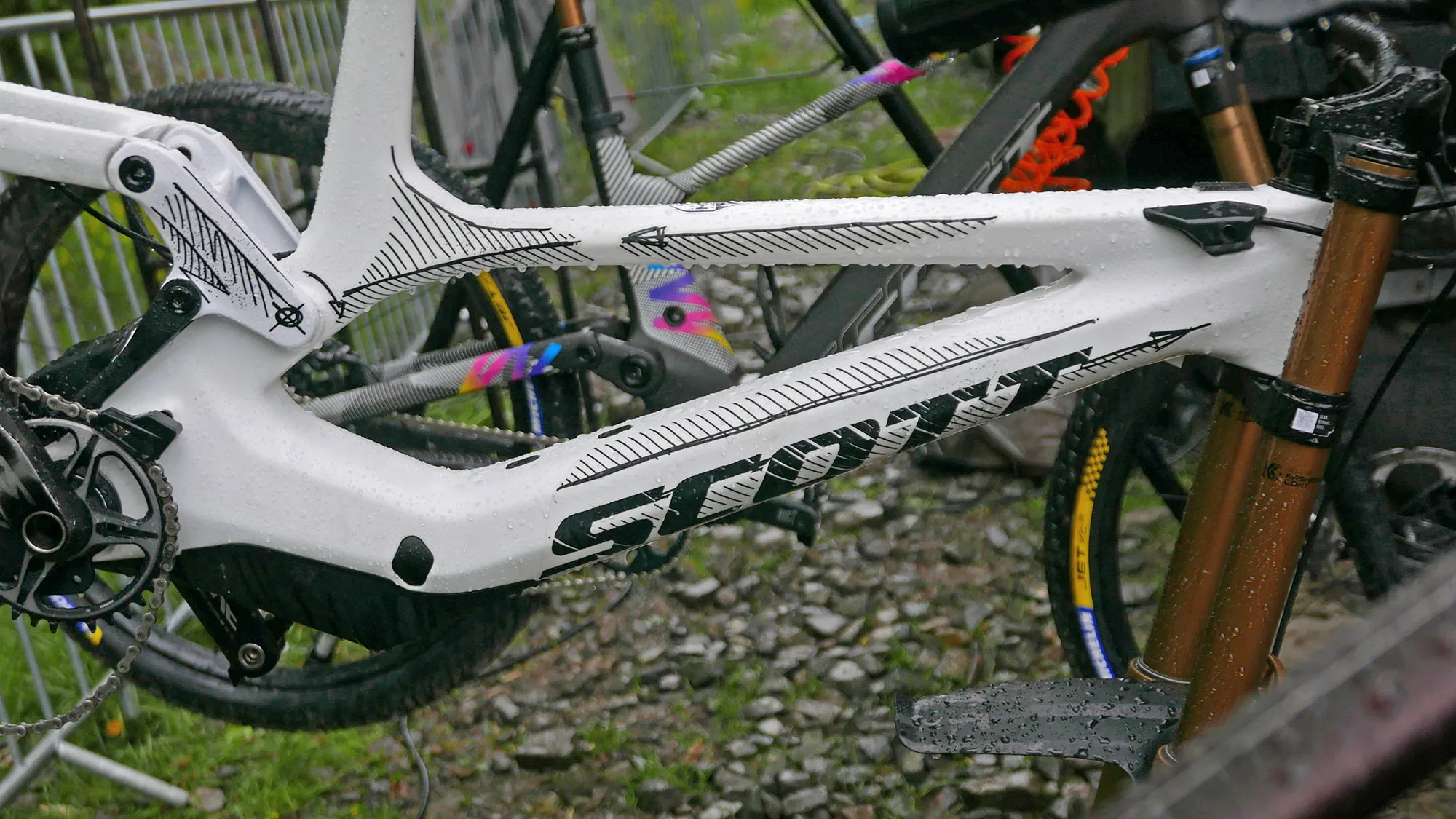

Another new feature is the diamond-shaped bolt cover just in front of Coulanges’ ankle. This would be a flip-chip for the forward shock mount, giving the rider the possibility to adjust the shock curve.
The bikes also forego fully internal cable routing (presumably in favor of easier Angleset headset geometry adjustment) and move cable routing to the sides of the headtube where Scott has placed a couple of bumpers for the upper tube of the double crown forks.
Innovative UDH & dropout flip-chip combined!
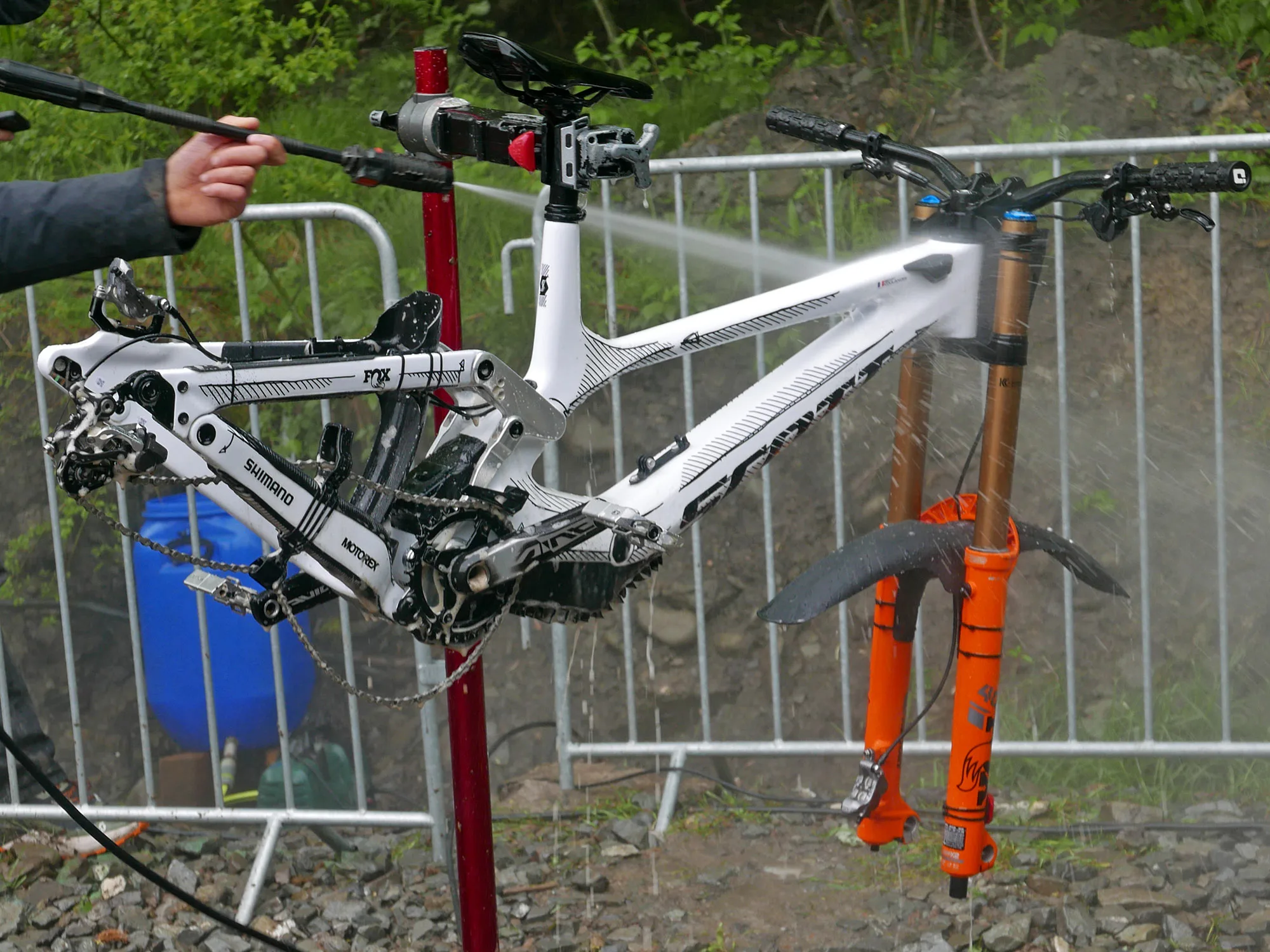

Another big difference that I see is moving chainstay length adjustment here to the dropout, instead of at the front of the chainstays on the Ransom. I will say that it is very difficult to flip that chip on my enduro bike without removing the chainring, so perhaps this is meant to make it easier for DH race teams to change chainstay length to suit varying track conditions.
Interestingly, this new Gambler only gets a removable/replaceable black aluminum dropout on the driveside, bolted into the otherwise carbon right-side seatstay. On the non-driveside, the stay is fully carbon, and just gets a flip-chip insert at the dropout. The bolt on the derailleur hanger is labeled UDH, which signals a unique solution. The UDH standard does not allow enough movement for a flip-chip at the axle at the same time as maintaining direct Full Mount connection for T-type derailleurs, so it seems Scott just created two separate UDH-compatible driveside dropouts – 1 for the short & 1 for the long chainstay position.
Presumably, there’s enough chainstay adjustment to run either a 27.5″ or 29″ rear wheel. But I only saw mullet setups being raced.
And what’s the same?


Generally speaking, the overall suspension layout is the same 6-bar as the Ransom. There’s the same short lower link that rotates around the bottom bracket and drives the shock hidden inside the frame. The same chainstay pivot just in front of the rear axle. And the same main rocker link up top, connected to the lower link with a set of vertical dogbone control links.
Plus, the carbon front triangle looks a lot like the Ransom, with the shock hidden inside. And again, Scott gives the bike a quick-release, removable lower cover for easy access to the shock, and still protection for the shock from mud, dust, and impacts.
What’s a 6-bar suspension again?
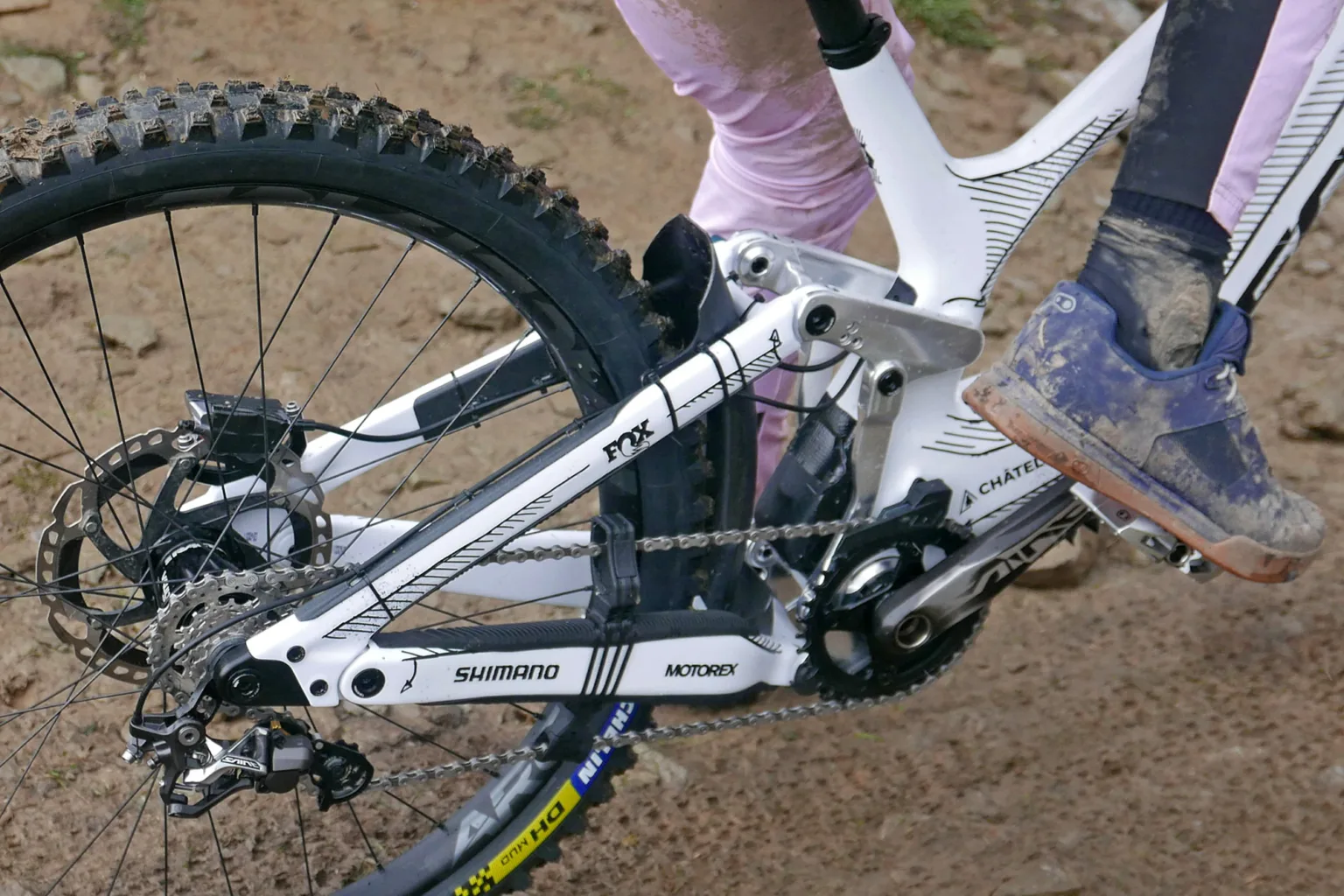



A 6-bar suspension layout always feels harder to visualize or explain. Scott engineers previously explained to me why they used it, saying it gives them more fine control over performance changes like shock rate, axle path, chain growth, and braking influence throughout the bike’s travel.
I feel like color helps better explain it. If it weren’t for that (blue) dogbone, it would have five links (easier to imagine its unstable movement with just an extra link splitting the Horst 4-bar). But then, with that extra control link (blue) connecting the two front short links (yellow & green), it guides their relative rotation midway through its travel. Basically, it makes for a next-gen virtual pivot solution, letting the suspension designers pick & choose performance characteristics that they want independently, at different points in the bike’s travel.
On the Ransom that meant: Supple early travel with a more rearward axle path for a plush feel. Less chain growth in the middle to end of travel. And a flatter anti-rise curve for a consistent feel at the pedals through rough sections. Plus, limited pedal kickback on big hits. All of those would sound great for a DH bike, too.
A closer 6-bar sneak peek in the World Cup pits
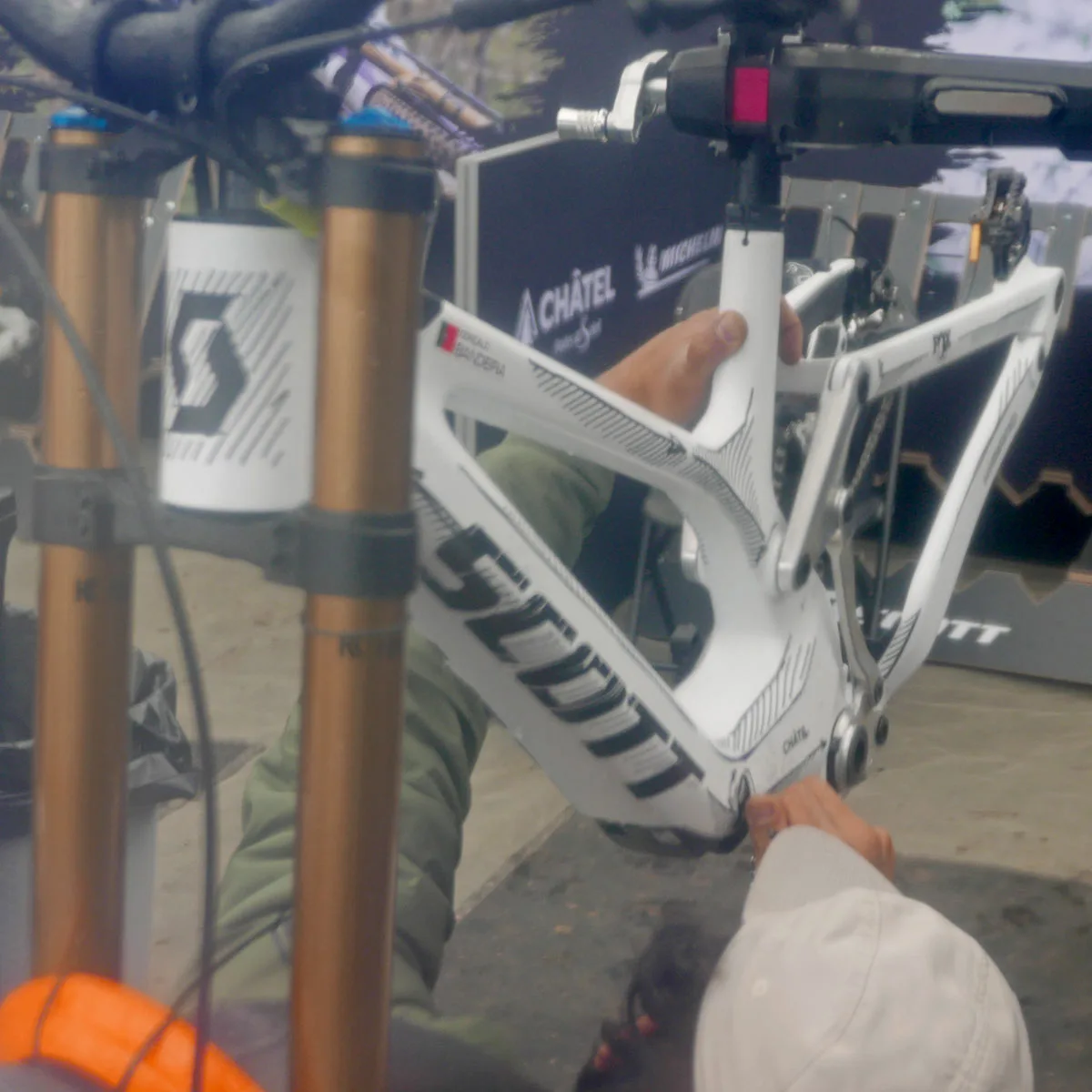



Linkage-wise, a sneak peek into the pits for pre-race service, and it looks like the Gambler solution is pretty much identical to the Ransom, just bigger. (To explain, let’s compare the photo above right; and then reference back to the colors in my 6-bar explainer.)
Bigger means a longer upper rocker link (bottom middle silver link; yellow), a main internal link with slightly longer lever arms (middle right black link; green but hidden), a longer lower chainstay lever for the external part of the lower link (center in silver with the bottom bracket bearing pressed into it; green) that is still connected to the dogbone control link (silver in the middle; blue).
So what’s next?
When will this new prototype Scott Gambler launch?


Well, for now Scott Downhill Factory team are racing prototype bikes, and dialing in the aluminum rocker links. It does look like the bike we spotted in the pits with a slightly shorter white rocker link looked pretty much production-ready. But only time will tell.


There are still 9 more DH World Cup races on the UCY MTB World Series schedule for the rest of the year, so Scott has plenty of opportunities to dial in the new bike, stretching into October.
Plus, the DH World Championships will be decided in Champéry, Switzerland in the first week of September, just an hour’s drive from Scott’s own Swiss HQ. If I had to guess, I’d bet that would be the perfect spot to officially debut the new DH bike.
We’ll mark our calendars.
Scott-Sports.com


















